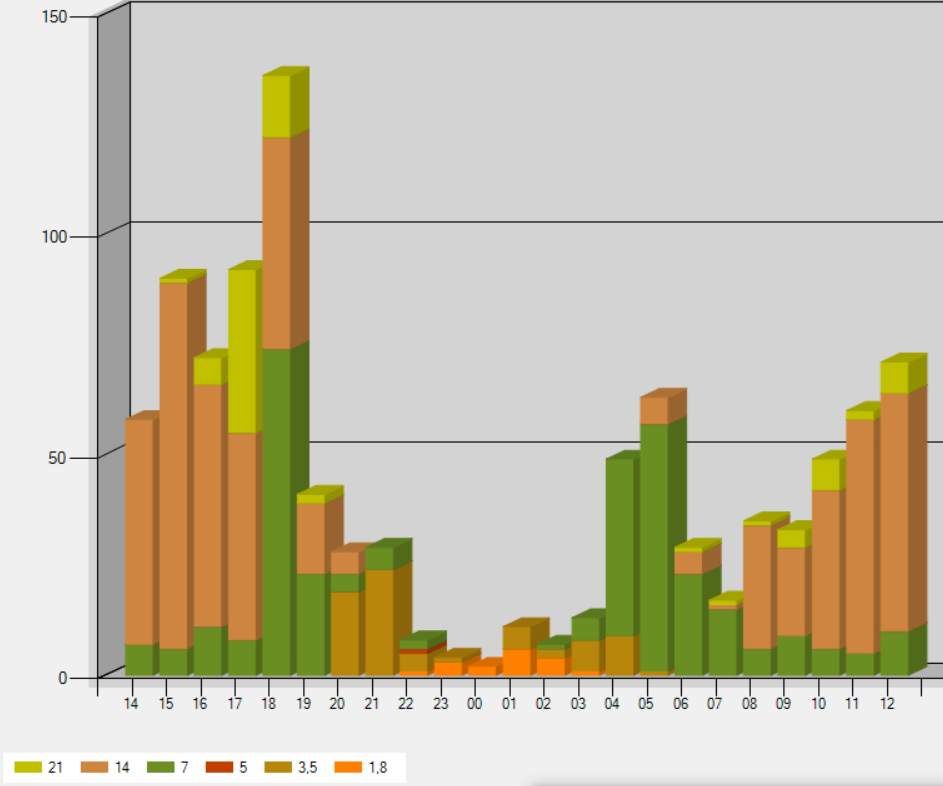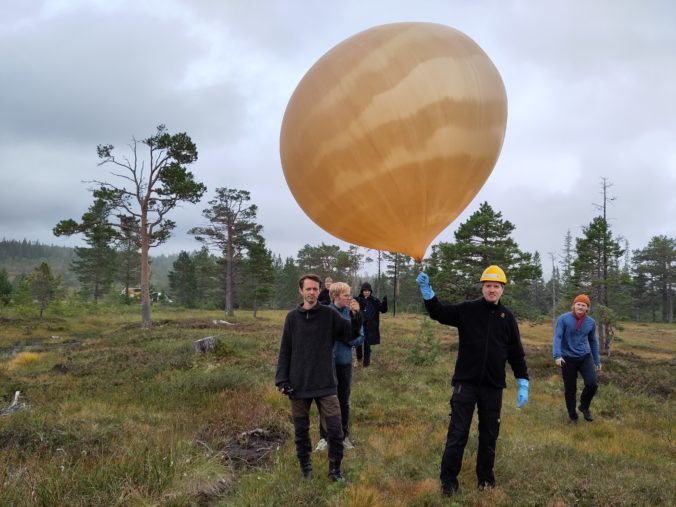On the 1st to the 3rd of September, it was once again time for the biggest event in the ARK year: Field Day. We went to Samatun in JP53HC, the same location as in previous years. The area offers a relatively large amount of space and is close to Trondheim at a price that is difficult to match with other places. The cabin can house up to 26 sleeping people, and the surrounding area can house even more people in tents.
Slightly different from previous years is that we started setting up some of the antennas and the shack on Friday evening. As it got darker, we assembled but did not raise our Spiderbeam tri-band yagi antenna. We also started assembling our experimental portable automatic satellite tracking antenna.

After two years of unsuccessfully trying to operate low earth orbit (LEO) satellites with a handheld yagi and two FT-4X handheld FM-radios, we tried to level up this year. Last year, we inherited a rotor and two yagis from Orbit, which we, together with an old tripod, intended to use as a portable ground station. Despite working slowly with it for several months, we did not succeed in finishing it in time for Field Day. We made a last-ditch attempt at sorting out the last issues after arriving at Samatun, but we had no success this year as well.

On Saturday morning, we started with the traditional Bananaphone shortened dipole, our new 80m quarter wave vertical, and continued with the Spiderbeam yagi. The new antenna needed new space, so we decided to use the space on the other side of the road. This meant we needed a longer coax cable and an air span, but the good news was that we changed the dry rock ground plane for a wet marsh ground plane. Despite the better ground plane, we stuck with the original plan of elevated radials, which had already been cut.

The process of erecting it was quite painless, probably because of the practice we gained the week before. In parallel, we continued with the spiderbeam multiband 10m-15m-20m wire yagi. After it broke last year, we had a new support beam and u-bolt, which made it almost as good as new.

Same as in previous years, we used our trusted homebrew 40m shortened horizontal dipole “Bananaphone”. It has served us faithfully for many years, despite being reduced in size and too low over the ground. Same as for the past few years, we put it in the ancient surplus army mast we inherited from the Red Cross.


During the setup phase, we typically prioritize 160m lower than the other bands for two reasons: 1. we expect it to be less important and result in fewer QSOs, and 2. we don’t need it before nightfall. This year, we started after the contest was going. In hindsight, this may seem overly optimistic because our new 160m balloon vertical was new and had to be tuned. Same as with the 80m vertical, we placed it in the marsh. Unlike the 80m vertical, we chose to lay the intended-for-being-elevated radials on the ground as it saved a lot of effort. Nevertheless, after a few hours, we had it flying. Unfortunately, the element turned out to be too short.

After cutting a new element and iteratively tuning it, we decided it was good enough at approximately Saturday midnight. This was the first time we had used a balloon-supported antenna and the first time we had a vertical for the 160m band. We got 17 QSOs with it, which is above average for the 160m band during LA1K’s Field Day, but not exceptionally many.

As opposed to the weekend when we made the antenna, Field Day saw moderate wind speeds. The balloon has a relatively high windbreak, which would push it towards the ground. Fortunately, the fish line guy wire concept worked relatively well. There were some gusts where the balloon dropped a little but it mostly kept to the right position.

The Norwegian version of Field Day gives extra points for several other activities than just the QSOs acquired, and one of them is amateur radio direction finding (often called fox hunt). A few years ago, LB1HH made three beacons for the same purpose, which we reused this year. Three different people hid them at three different locations, and the two participating teams got a measure tape yagi each to search for them. The winning team found all three, and the other team found two.

In earlier years, we have made attempts at reaching QO-100. This year, we had prepared for a new and better attempt, but unfortunately, the equipment was forgotten and left behind when departing for Samatun.

The conditions were relatively favorable, but a delayed start due to technical issues with the logging program meant we could not use the shack for the first hour. As usual, the 20m band and 40m band were our best.
Band Mode QSOs Pts DXC Pt/Q
1,8 LSB 17 48 4 2,8
3,5 LSB 72 184 13 2,6
5 FT8 1 1 1 1,0
7 LSB 316 734 25 2,3
14 USB 508 946 36 1,9
21 USB 83 143 23 1,7
Total Both 997 2056 102 2,1
Score: 209 712
1 Mult = 9,8 Q's
All things considered, we consider Field Day a success this year. We tried out three new antennas, of which two worked great and set new records for antenna height in ARK-context. Thanks to everyone who made this possible!


Leave a Reply